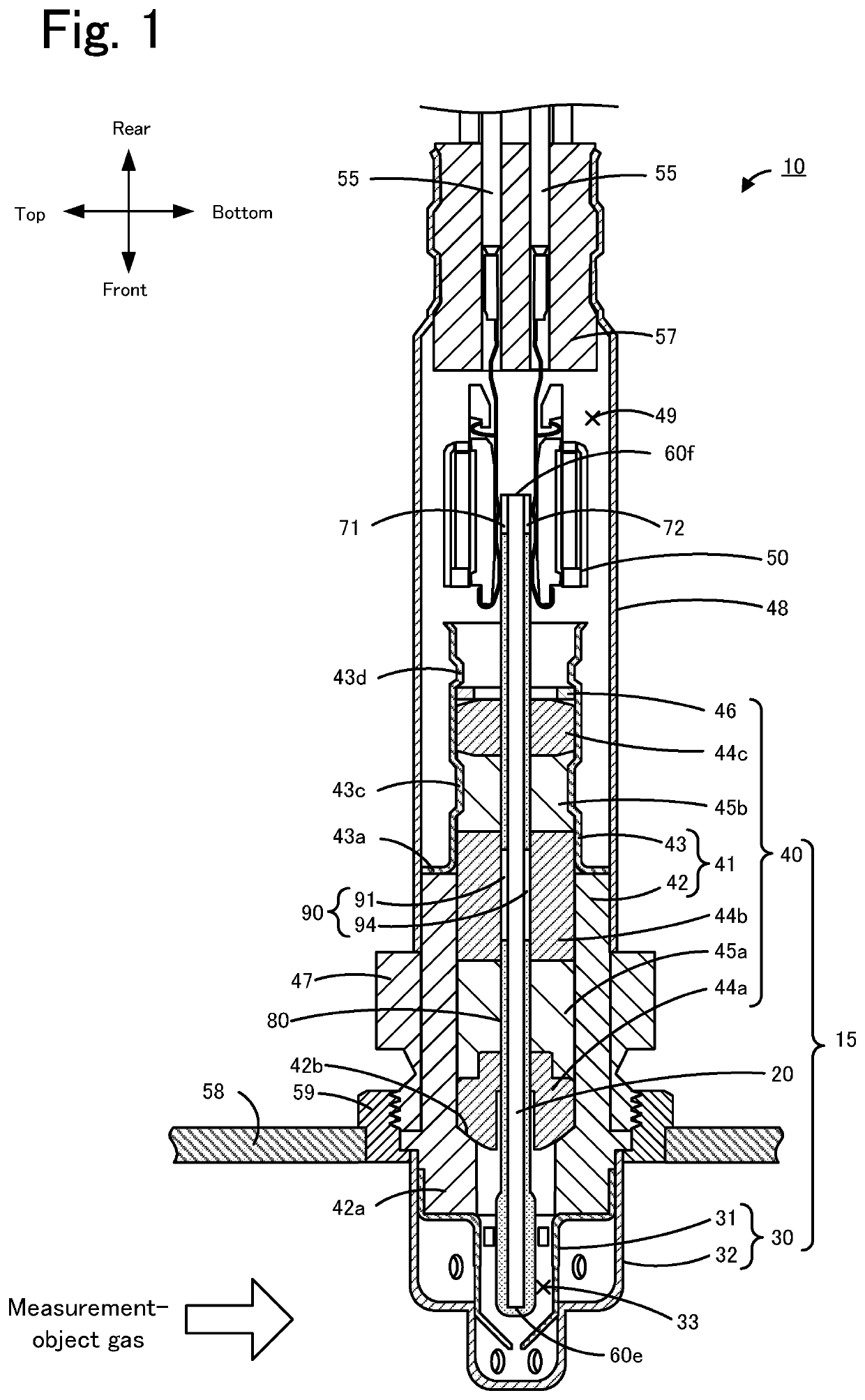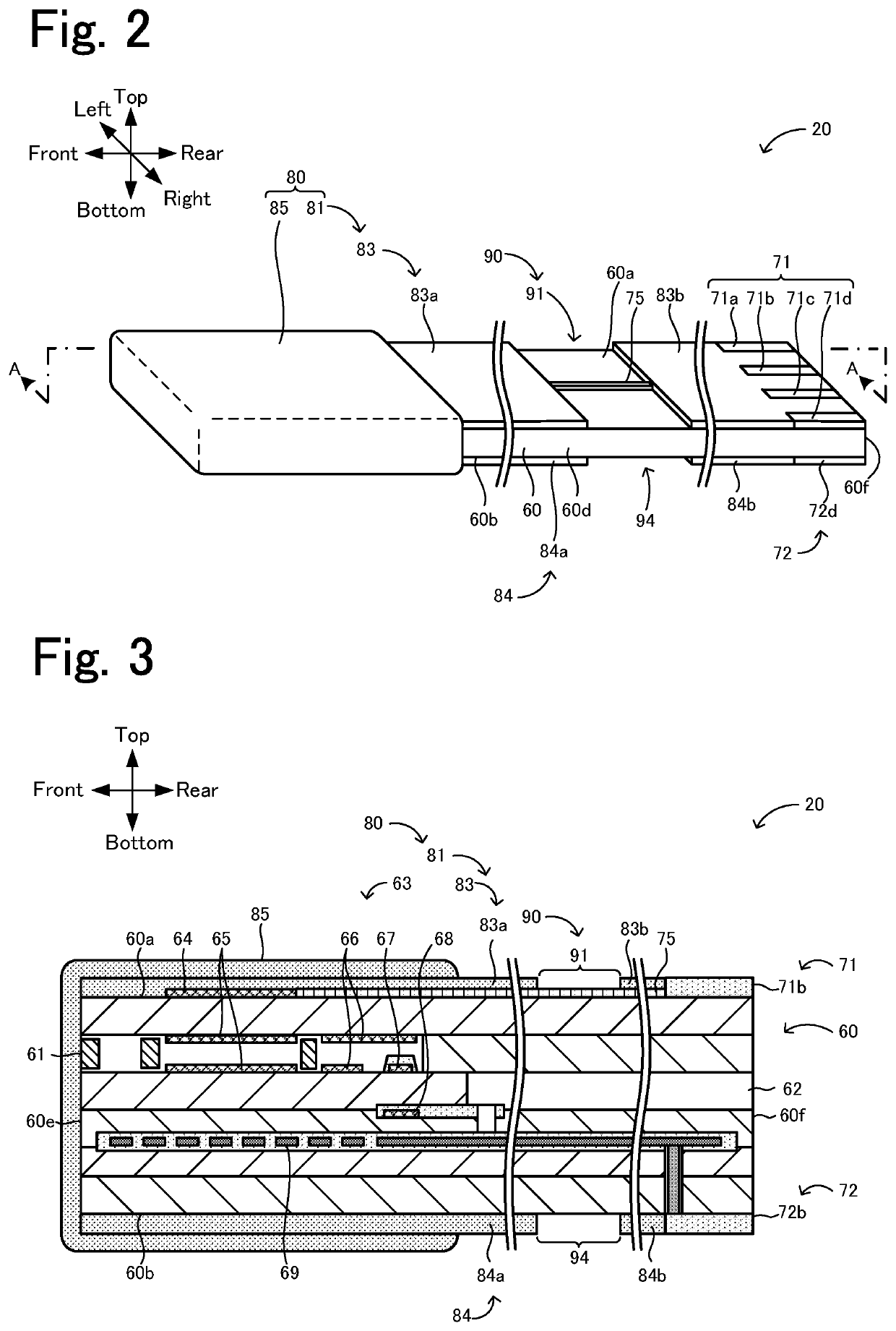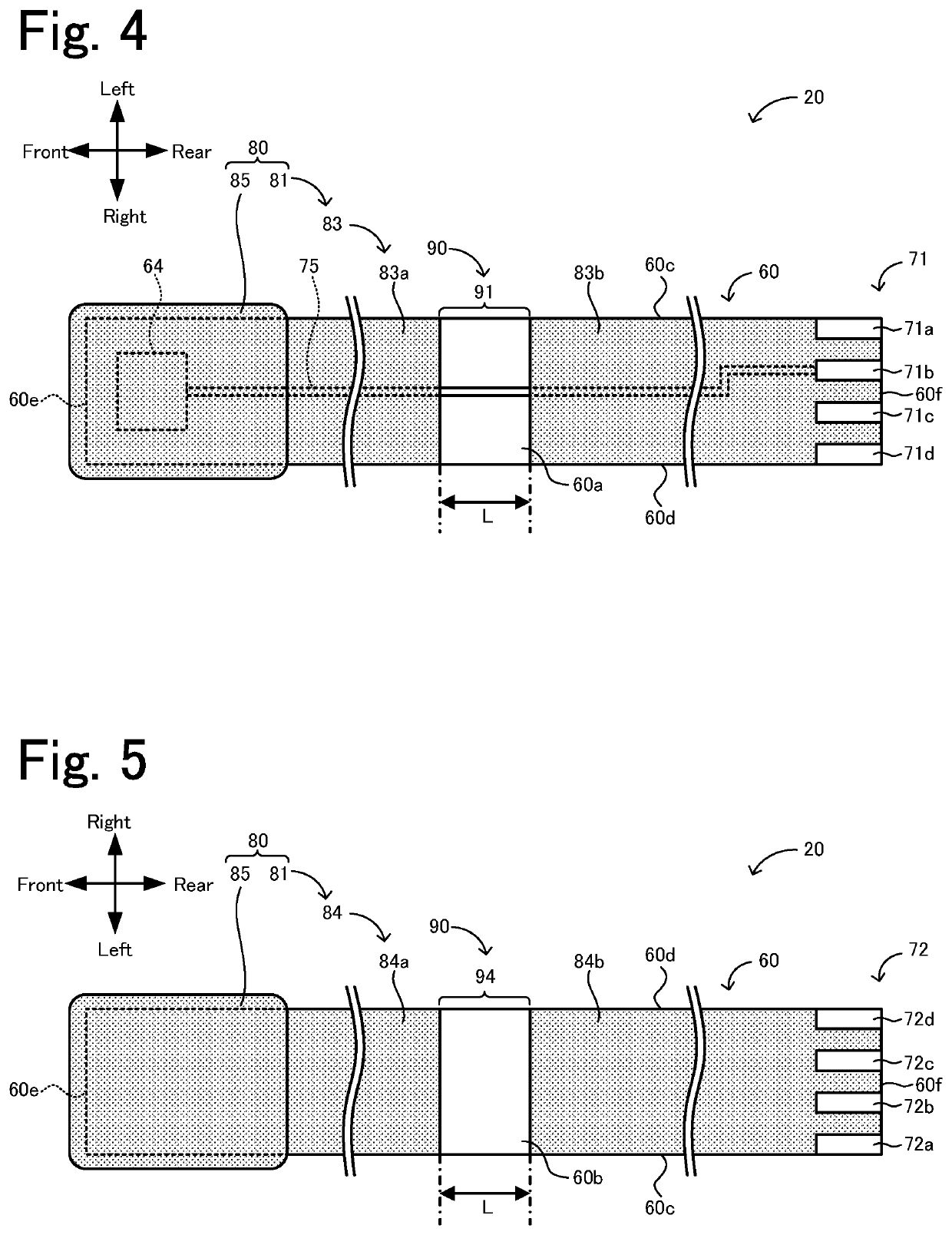Gas sensor
a technology of gas sensor and connector electrode, which is applied in the field of gas sensor, can solve the problems of connector electrode corrosion and short circuit between the connector electrod
- Summary
- Abstract
- Description
- Claims
- Application Information
AI Technical Summary
Benefits of technology
Problems solved by technology
Method used
Image
Examples
experimental example 1
[0082]In Experimental example 1, a sensor element that was the same as the sensor element 20 illustrated in FIGS. 2 to 5 was prepared, and a gas sensor 10 that included this sensor element was prepared. Note that, in Experimental example 1, the positional relationship between the insulator 44b and the water-penetration reduction portion 90 was changed from the above-described embodiment illustrated in FIG. 6 as illustrated in FIG. 8. The sensor element 20 of the Experimental example 1 was prepared in the following manner. First, zirconia particles containing 4 mol % yttria serving as a stabilizer were mixed with an organic binder and an organic solvent. The resulting mixture was formed into six ceramic green sheets by tape casting. Patterns of electrodes and the like were printed in each of the green sheets. In addition, unbaked porous layers that were to be formed into the first inner porous layer 83 and the second inner porous layer 84 after baking were formed by screen printing. ...
experimental example 2
[0084]In Experimental example 2, a gas sensor 10 that was the same as the gas sensor 10 prepared in Experimental example 1 was prepared, except that the shape of the first and second inner porous layers 83 and 84 was changed such that the insulator 44b and the water-penetration reduction portion 90 had the positional relationship illustrated in FIG. 6 in the front-to-rear direction. In Experimental example 2, the first and second water-penetration reduction portions 91 and 94 were included in the insulator 44b in the front-to-rear direction as illustrated in FIG. 6, and the overlap length W was 5 mm (=L). In Experimental example 2, the front ends of the first and second water-penetration reduction portions 91 and 94 were located 31 mm from the front end of the element main body 60.
experimental examples 3 to 5
[0085]In Experimental examples 3 to 5, a gas sensor 10 that was the same as the gas sensor 10 prepared in Experimental example 1 was prepared, except that the shape of the first and second inner porous layers 83 and 84 was changed such that the insulator 44b and the water-penetration reduction portion 90 had the positional relationship illustrated in FIG. 9 in the front-to-rear direction. In Experimental examples 3 to 5, the length L of the first and second water-penetration reduction portions 91 and 94 was set to 5 mm. As illustrated in FIG. 9, the rear end-side parts of the first and second water-penetration reduction portions 91 and 94 overlapped the insulator 44b in the front-to-rear direction, and the overlap length W was 3 mm, 0.5 mm, and 0.3 mm in Experimental examples 3, 4, and 5, respectively. The distance from the front end of the element main body 60 to the front ends of the first and second water-penetration reduction portions 91 and 94 was 27 mm, 24.5 mm, and 24.3 mm in...
PUM
 Login to View More
Login to View More Abstract
Description
Claims
Application Information
 Login to View More
Login to View More - R&D
- Intellectual Property
- Life Sciences
- Materials
- Tech Scout
- Unparalleled Data Quality
- Higher Quality Content
- 60% Fewer Hallucinations
Browse by: Latest US Patents, China's latest patents, Technical Efficacy Thesaurus, Application Domain, Technology Topic, Popular Technical Reports.
© 2025 PatSnap. All rights reserved.Legal|Privacy policy|Modern Slavery Act Transparency Statement|Sitemap|About US| Contact US: help@patsnap.com



